Low-Frequency Expansion Approach for Seismic Data Based on Compressed Sensing in Low SNR
Abstract
:Featured Application
Abstract
1. Introduction
2. CS Theory
3. Low Frequency Expansion
3.1. Basic Theory
- (1)
- Select the point where and G are equal;
- (2)
- The spectrum value in before the point and the spectrum value in G after the point are extracted and combined into the spectrum after low-frequency expansion; the formula is described as follows:where L and H are the operators to extract the low-frequency and high-frequency spectrum values, respectively.
- (3)
- The seismic data after low-frequency expansion can be obtained by inverse Fourier transform of .
3.2. Well Constrained Low-Frequency Expansion Method
3.3. Algorithm Implementation
4. Application to Seismic Data
4.1. Synthetic Data Example
4.2. Field Data Example
- (1)
- The seismic event at position A in the original section is discontinuous, so it is difficult to judge the basic trend of the formation. After the expansion of the two methods, energy of the seismic event at this position is significantly enhanced, and the basic trend of the formation is clear.
- (2)
- The seismic event at B in the original section are also discontinuous, and the continuity has been improved to a certain extend after CS low-frequency expansion. In the proposed method, the inversion process of the reflection coefficient is constrained by the well data, and the continuity of the seismic event after expansion is substantially improved.
- (3)
- The seismic event at the position C is not obvious. After expansion processing of CS method, the low-frequency energy is improved, but the continuity is still poor. After the expansion processing of the proposed method, the continuity of the event is significantly improved, and the effect of the low-frequency expansion is the best.
5. Conclusions
Author Contributions
Funding
Data Availability Statement
Conflicts of Interest
References
- Ziolkowki, A.; Hanssen, P.; Gatliff, R.; Jakubowicz, H.; Dobson, A.; Hampson, G.; Li, X.Y.; Liu, E.R. Use of low frequencies for sub-basalt imaging. Geophys. Prospect. 2003, 51, 169–182. [Google Scholar] [CrossRef]
- Woodburn, N.; Hardwick, A.; Travis, T. Enhanced low frequency signal processing for sub-basalt imaging. In Proceedings of the 81th SEG Annual Meeting, San Antonio, TX, USA, 18–23 September 2011; pp. 3673–3677. [Google Scholar]
- Liu, H.; Liu, X. Depth-Extrapolation-Based True-Amplitude Full-Wave-Equation Migration from Topography. Appl. Sci. 2021, 11, 3010. [Google Scholar] [CrossRef]
- Huang, J.; Cui, C.; Liu, M. A hybrid multi-scale full waveform inversion method based on frequency-wavenumber filter and its implementation strategies. J. China Univ. Pet. 2018, 42, 50–59. [Google Scholar]
- Zhang, J.; Zhang, B.; Zhang, Z.; Liang, H.; Ge, D. Low-frequency data analysis and expansion. Appl. Geophys. 2015, 12, 212–220. [Google Scholar] [CrossRef]
- Liu, C.; Zhou, W.; Niu, C.; Long, D.; Wu, N. Cepstral time-frequency domain deconvolution based on improved generalized S-transform. J. China Univ. Pet. 2018, 42, 57–64. [Google Scholar]
- Wang, D.; Kong, X.; Dong, L.; Chen, L.; Wang, Y.; Wang, X. A predictive deconvolution method for non-white-noise reflectivity. Appl. Geophys. 2019, 16, 115. [Google Scholar] [CrossRef]
- Silvia, M.T.; Robinson, E.A. Deconvolution of geophysical time series in the exploration for oil and natural gas. Geo-Exploration 1980, 18, 77–78. [Google Scholar]
- Wiggins, R.A. Minimum entropy deconvolution. Geo-Exploration 1978, 16, 21–35. [Google Scholar] [CrossRef]
- Claerbourt, J.F. Parsimonious deconvolution. Stanf. Explor. Proj. 1977, 13, 1–9. [Google Scholar]
- Gray, W. Variable Norm Deconvolution. Ph.D. Thesis, Stanford University, Stanford, CA, USA, 1979. [Google Scholar]
- Ooe, M.; Ulrych, T.J. Minimum entropy deconvolution with an exponential transfrom. Geophys. Prospect. 2010, 27, 458–473. [Google Scholar] [CrossRef]
- Godfrey, R. An information theory approach to deconvotion. Stanf. Explor. Proj. 1978, 15, 157–182. [Google Scholar]
- Walden, A.T. Non-Gaussian reflecticity, entrory, and deconvolution. Geophysics 1985, 50, 2862–2888. [Google Scholar] [CrossRef]
- Larue, A.; Mars, J.I.; Jutten, C. Frequency-domain blind deconvolution based on mutual information rate. IEEE Trans. Signal Process. 2006, 54, 1771–1781. [Google Scholar] [CrossRef]
- Mirko, V.; Pham, D.T. Robust wavelet estimation and blind deconvolution of noisy surface seismic. Geophysics 2008, 73, V37–V46. [Google Scholar]
- Rosa, A.; Ulrych, T.J. Processing via spectral modeling. Geophysics 1991, 56, 1244–1251. [Google Scholar] [CrossRef]
- Guan, L.; Tang, Q. High/Low frequency compensation of seismic signal. Geophys. Prospect. Pet. 1990, 29, 35–45. [Google Scholar]
- Masoomzadeh, H.; Barton, P.; Singh, S. Preservation of low frequencies in wide-angle data processing for sub-basalt imaging. In Proceedings of the 76th SEG Annual Meeting, New Orleans, LA, USA, 1–6 October 2011; pp. 2832–2836. [Google Scholar]
- Guo, S.; Wang, L.; Han, W. Analysis on optimization processing method of prestack data. Geophys. Prospect. Pet. 2006, 45, 497–502. [Google Scholar]
- Han, L.; Zhang, Y.; Han, L.; Yu, Q. Compressed sensing and sparse inversion based low-frequency information compensation of seismic data. J. Jilin Univ. 2012, 42, 259–264. [Google Scholar]
- Ahmad, N.; Khan, S.; Al-Shuhail, A. Seismic Data Interpretation and Petrophysical Analysis of Kabirwala Area Tola (01) Well, Central Indus Basin, Pakistan. Appl. Sci. 2021, 11, 2911. [Google Scholar] [CrossRef]
- Zhang, Y.; Luo, Y.; Ling, F. Seismic trace multi-scale inversion using logging data and seismic data. Earth Sci. 2001, 26, 533–537. [Google Scholar]
- Pedersen-Tatalovic, R.; Uldall, A.; Jacobsen, N.L.; Hansen, T.M.; Mosegaard, K. Event based low frequency impedance modeling using well logs and seismic attributes. Lead. Edge 2008, 27, 592–603. [Google Scholar] [CrossRef] [Green Version]
- Donoho, D.L. Compressed sensing. IEEE Trans. Inf. Theory 2006, 52, 1289–1306. [Google Scholar] [CrossRef]
- Candès, E.; Romberg, J.; Tao, T. Stable signal recovery from incomplete and inaccurate measurements. Commun. Pure Appl. Math 2005, 99, 1207–1223. [Google Scholar] [CrossRef] [Green Version]
- Candès, E.J.; Romberg, J. Practical Signal Recovery from Random projections. Proc. SPIE Int. Soc. Opt. Eng. 2004, 5674, 76–86. [Google Scholar]
- Donoho, D.L.; Huo, X. Uncertainty principles and ideal atomic decomposition. IEEE Trans. Inf. Theory 2001, 47, 2845–2862. [Google Scholar] [CrossRef] [Green Version]
- Bi, X.; Leng, L.; Kim, C.; Liu, X.; Du, Y.; Liu, F. Constrained backtracking matching pursuit algorithm for image reconstruction in compressed sensing. Appl. Sci. 2021, 11, 1435. [Google Scholar] [CrossRef]
- Candès, E.J. The restricted isometry property and its implications for compressed sensing. Comptes Rendus Math. 2008, 346, 589–592. [Google Scholar] [CrossRef]
- Baraniuk, R.; Davenport, M.; Devore, R.; Wakin, M. A simple proof of the restricted isometry property for random matrices. Constr. Approx. 2007, 23, 91–925. [Google Scholar] [CrossRef] [Green Version]
- Kirachaiwanich, D.; Liang, Q. Compressive sensing: To compress or not to compress. In Proceedings of the Forty-Fifth Asilomar Conference on Signals, Systems and Computers (ASILOMAR), Pacific Grove, CA, USA, 6–9 November 2011; pp. 809–813. [Google Scholar]
- Herrmann, F.J.; Hennenfent, G. Non-parametric seismic data recovery with curvelet-frames. Geophys. J. Int. 2008, 173, 233–248. [Google Scholar] [CrossRef] [Green Version]
- Tropp, J.; Gilbert, A. Signal Recovery from Partial Information via Orthogonal Matching Pursuit. IEEE Trans. Inf. Theory 2007, 53, 4655–4666. [Google Scholar] [CrossRef] [Green Version]
- Davenport, M.A.; Needell, D.; Wakin, M.B. Signal space CoSaMP for sparse recovery with redundant dictionaries. IEEE Trans. Inf. Theory 2013, 59, 6820–6829. [Google Scholar] [CrossRef] [Green Version]
- Li, Q.; Huang, J.; Li, Z.; Li, N. 3D multi-source least-squares reverse time migration based on L1 norm regularization. J. China Univ. Pet. 2019, 43, 52–59. [Google Scholar]
- Gorodnitski, I.F.; Rao, B.D. Sparse signal reconstruction from limited data using focuss: A reweighted norm minimization algorithm. IEEE Trans. Signal. Process. 1997, 45, 600–616. [Google Scholar] [CrossRef] [Green Version]
- Moshtaghpour, A.; Jacques, L.; Cambareri, V.; Degraux, K.; Vleeschouwer, C.D. Consistent basis pursuit for signal and matrix estimates in quantized compressed sensing. IEEE Signal. Process. Lett. 2016, 23, 25–29. [Google Scholar] [CrossRef] [Green Version]
- Blumensath, T.; Davies, M.E. Iterative hard thresholding for compressed sensing. Appl. Comput. Harmon. Anal. 2009, 27, 265–274. [Google Scholar] [CrossRef] [Green Version]
- Jiao, X.; Du, Q.; Zhao, Q. Compressed sensing seismic data reconstruction based on maximum correntropy criterion. J. China Univ. Pet. 2020, 44, 38–46. [Google Scholar]
- Cao, J.; Wang, S.; Li, W. Seismic reconstruction with 3D low-redundancy curvelet transform and compressed sensing theory. J. China Univ. Pet. 2017, 41, 61–68. [Google Scholar]
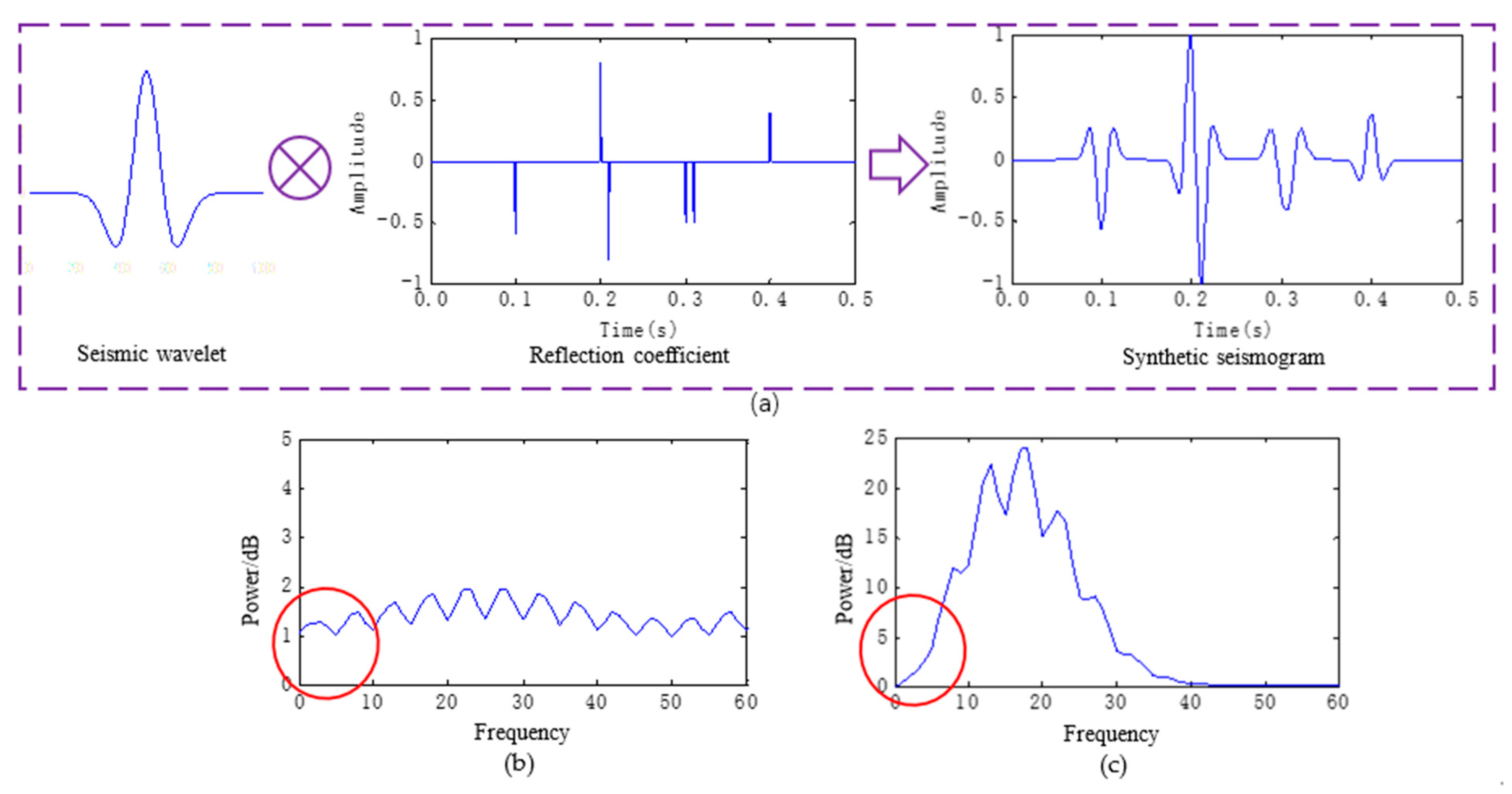
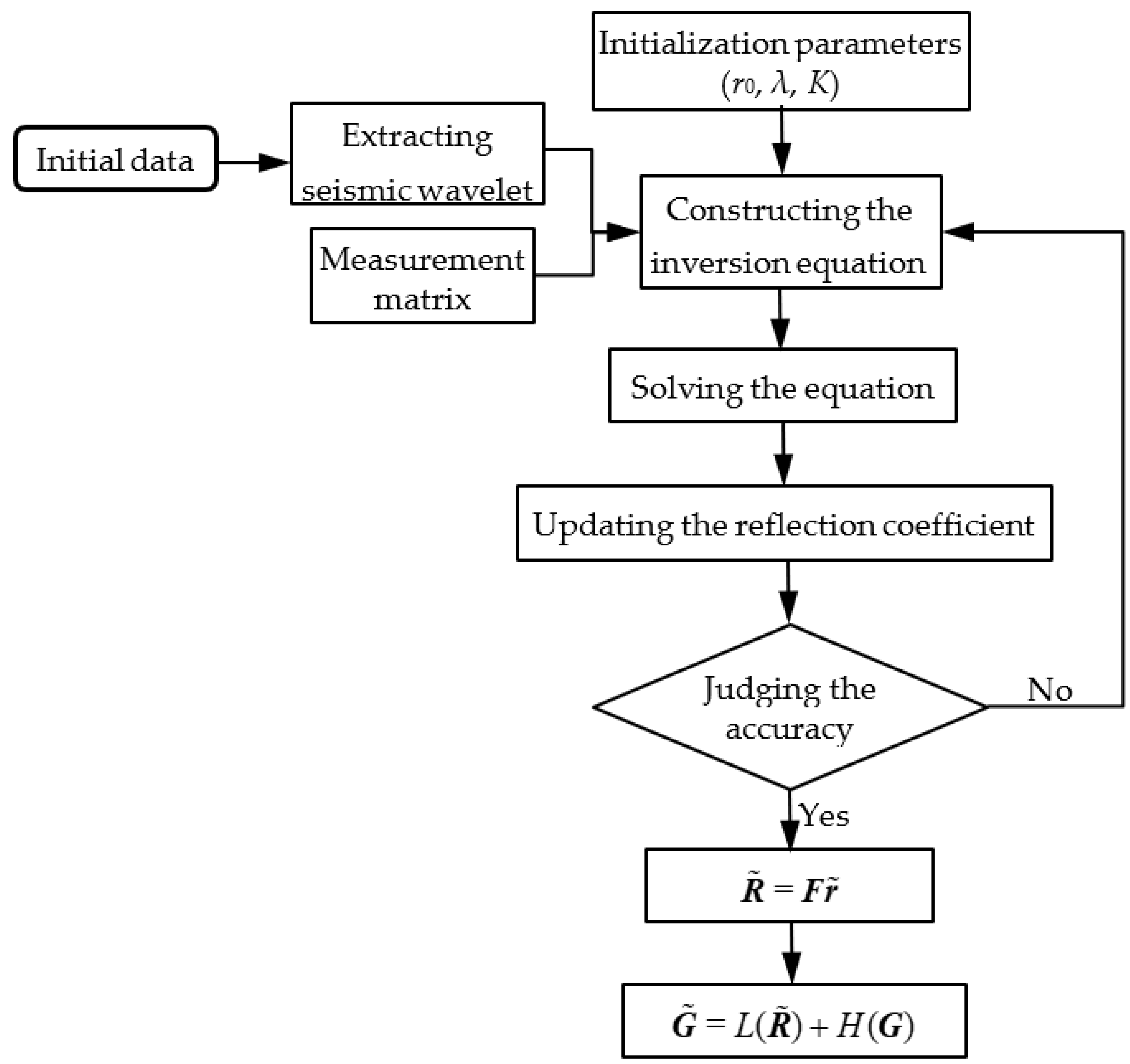
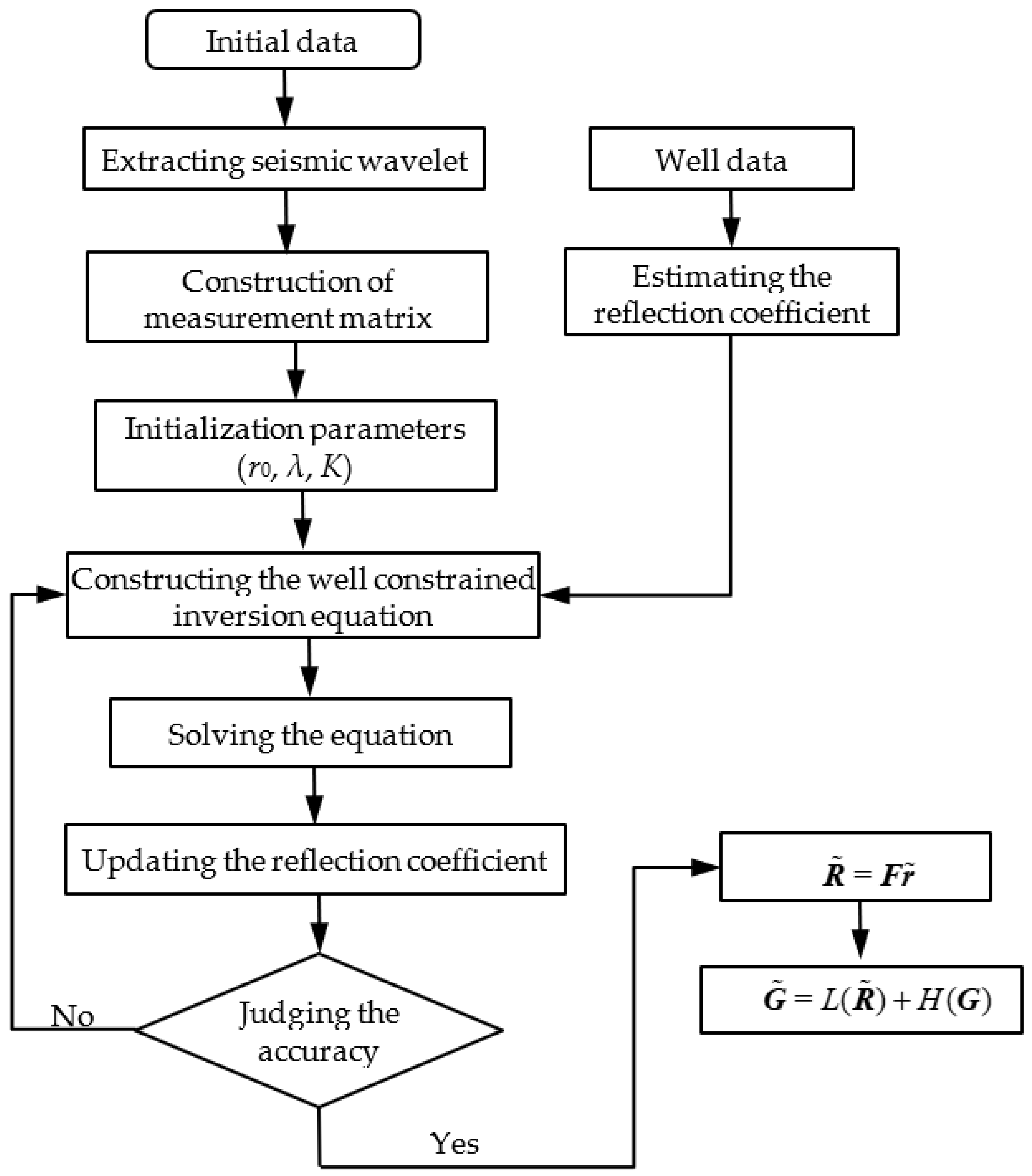
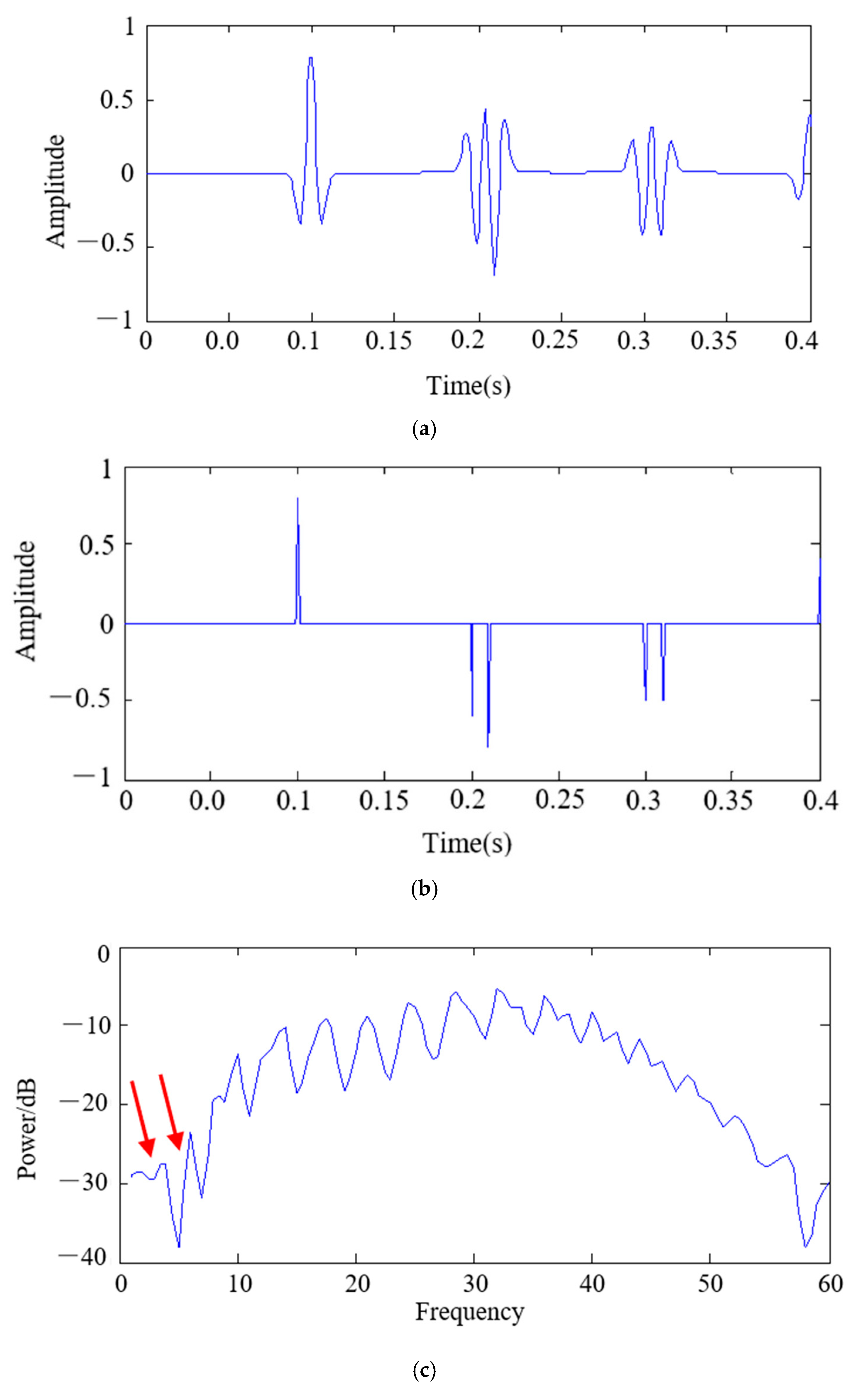
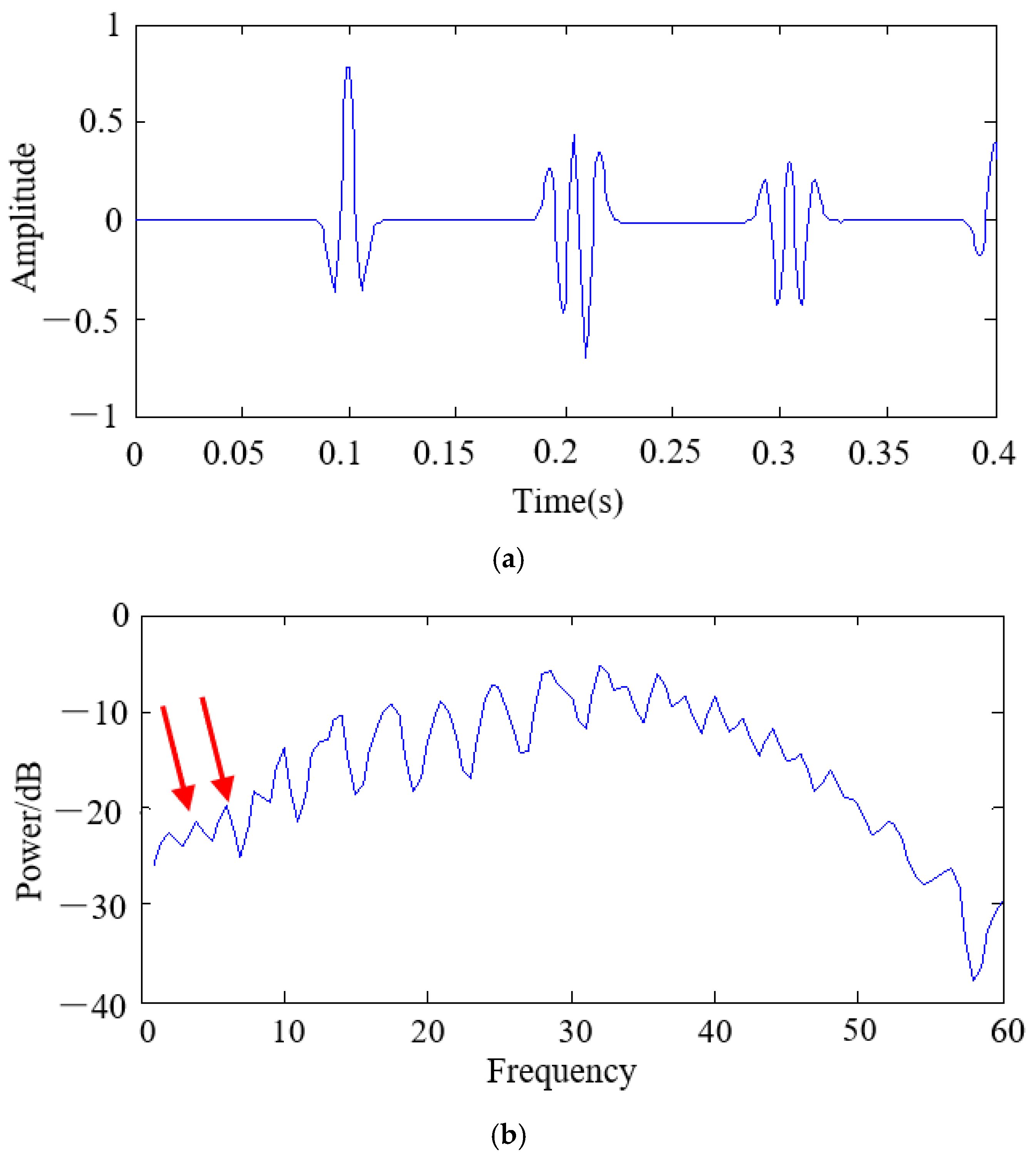


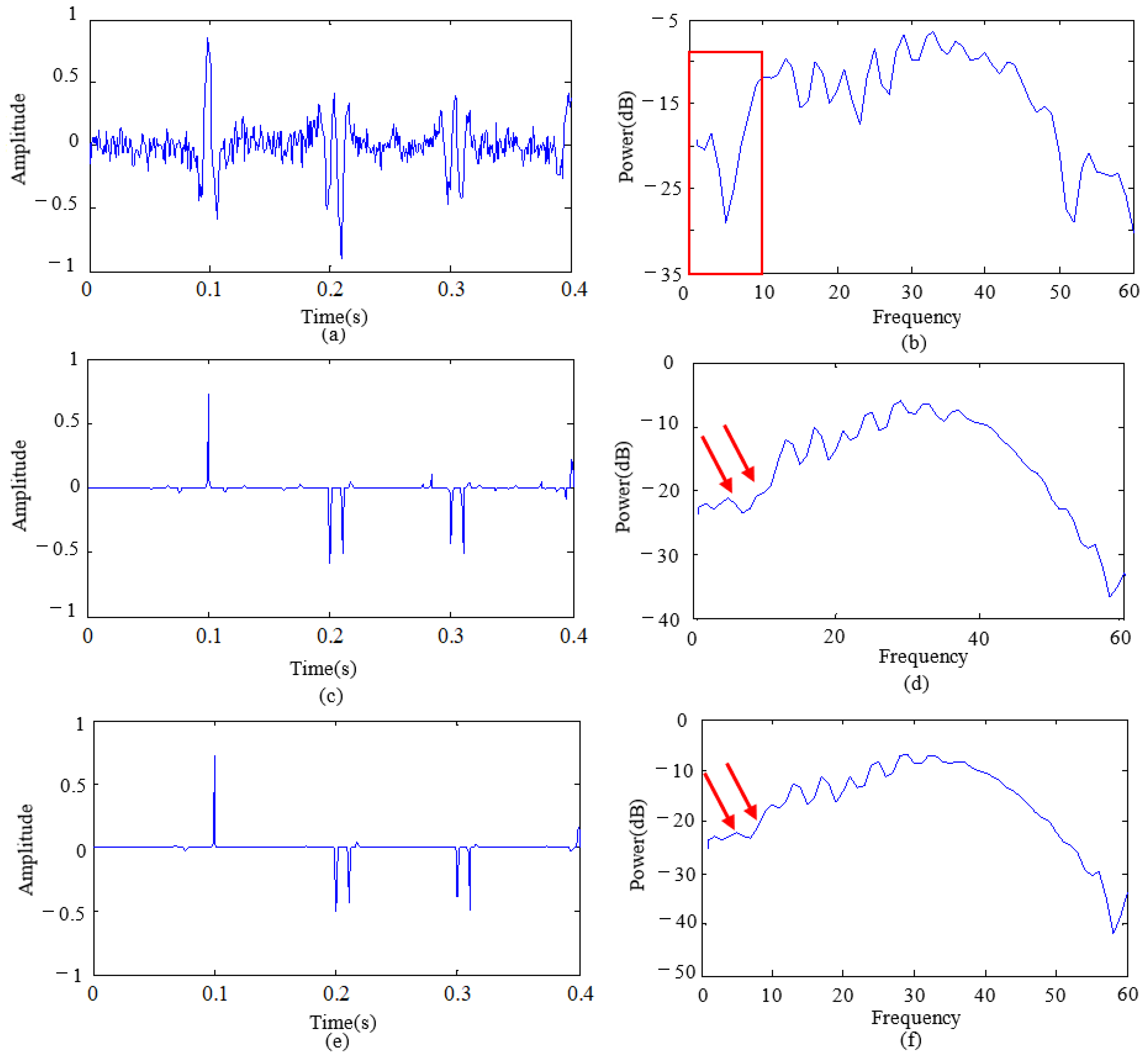

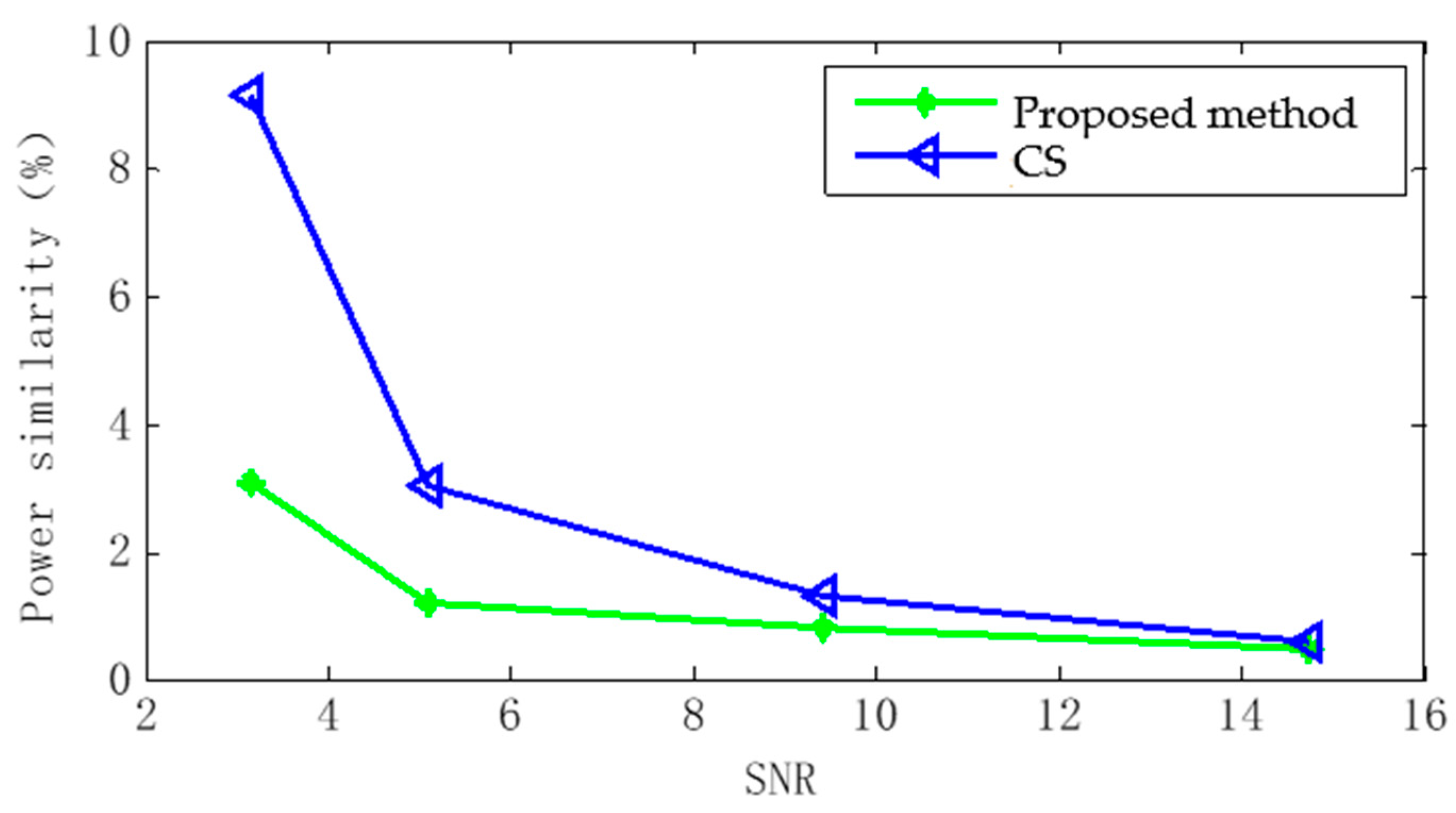

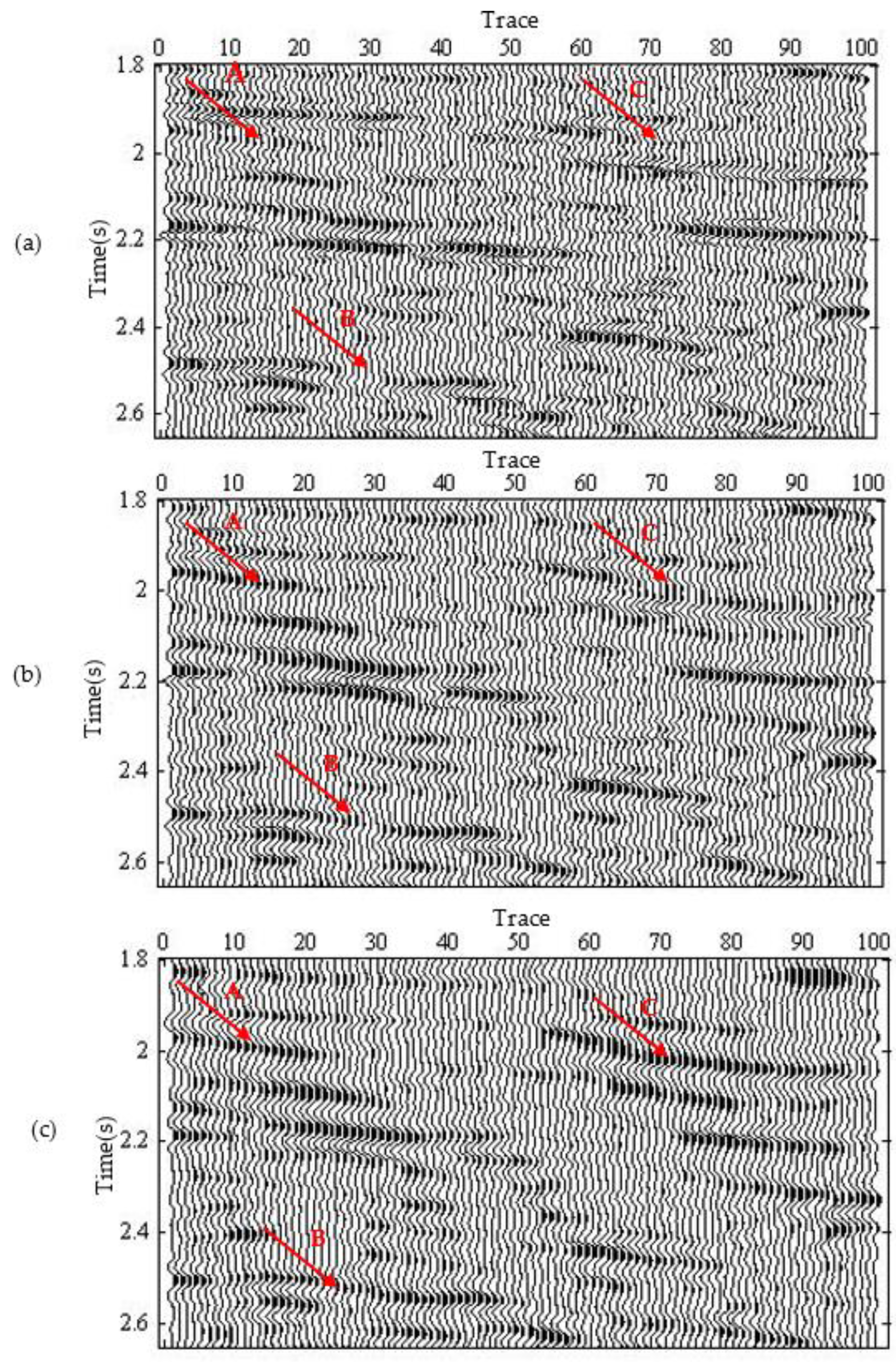

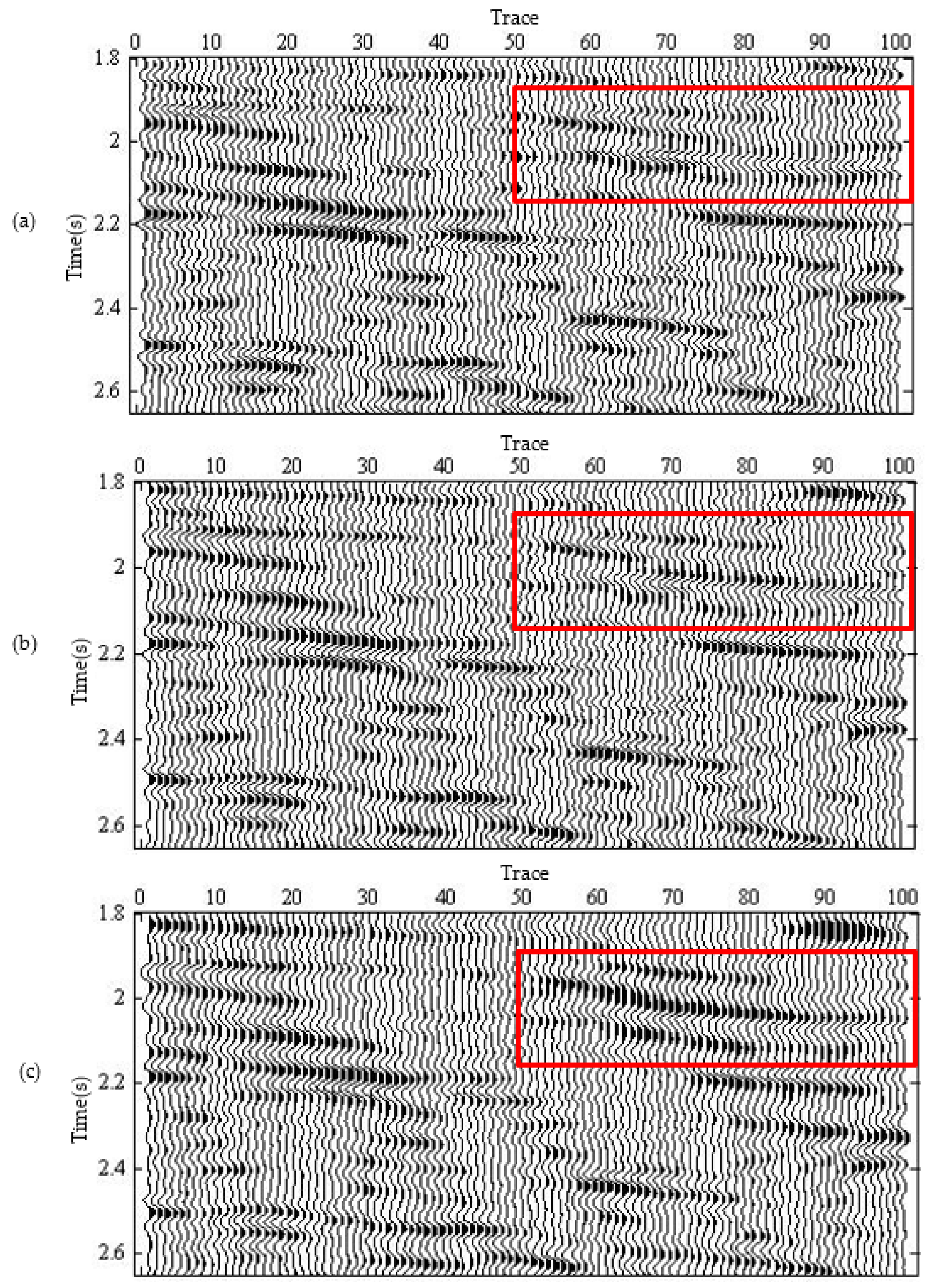
Publisher’s Note: MDPI stays neutral with regard to jurisdictional claims in published maps and institutional affiliations. |
© 2021 by the authors. Licensee MDPI, Basel, Switzerland. This article is an open access article distributed under the terms and conditions of the Creative Commons Attribution (CC BY) license (https://creativecommons.org/licenses/by/4.0/).
Share and Cite
Sun, M.; Li, Z.; Liu, Y.; Wang, J.; Su, Y. Low-Frequency Expansion Approach for Seismic Data Based on Compressed Sensing in Low SNR. Appl. Sci. 2021, 11, 5028. https://doi.org/10.3390/app11115028
Sun M, Li Z, Liu Y, Wang J, Su Y. Low-Frequency Expansion Approach for Seismic Data Based on Compressed Sensing in Low SNR. Applied Sciences. 2021; 11(11):5028. https://doi.org/10.3390/app11115028
Chicago/Turabian StyleSun, Miaomiao, Zhenchun Li, Yanli Liu, Jiao Wang, and Yufei Su. 2021. "Low-Frequency Expansion Approach for Seismic Data Based on Compressed Sensing in Low SNR" Applied Sciences 11, no. 11: 5028. https://doi.org/10.3390/app11115028
APA StyleSun, M., Li, Z., Liu, Y., Wang, J., & Su, Y. (2021). Low-Frequency Expansion Approach for Seismic Data Based on Compressed Sensing in Low SNR. Applied Sciences, 11(11), 5028. https://doi.org/10.3390/app11115028





